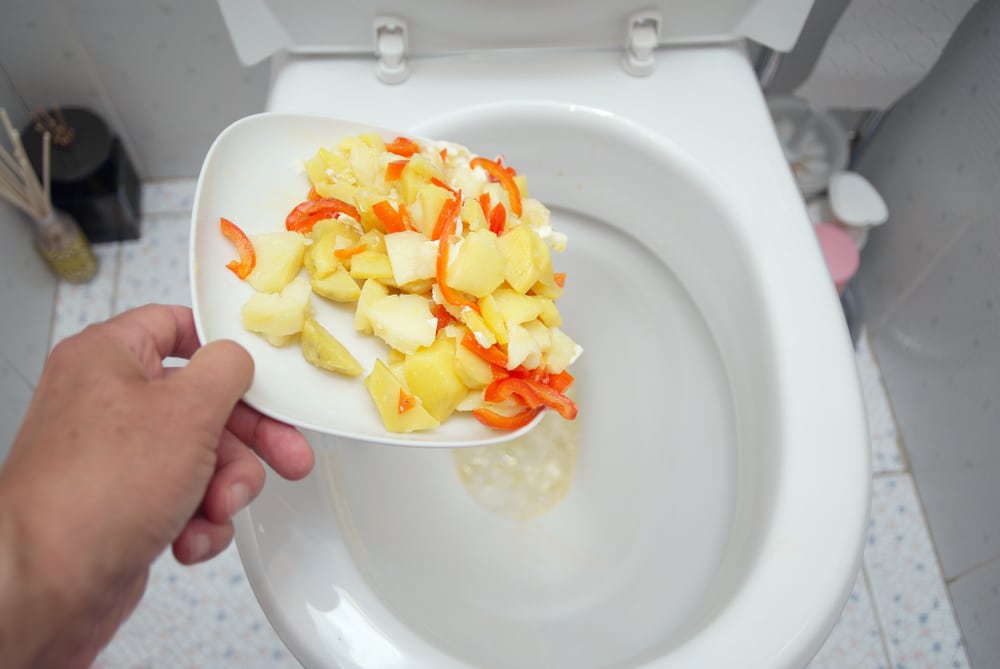What're your ideas concerning Think Twice Before Flushing Food Down Your Toilet?

Intro
Lots of people are frequently faced with the issue of what to do with food waste, particularly when it pertains to leftovers or scraps. One usual concern that develops is whether it's fine to flush food down the bathroom. In this article, we'll look into the reasons individuals might think about flushing food, the repercussions of doing so, and different methods for appropriate disposal.
Reasons why individuals may take into consideration flushing food
Absence of awareness
Some people may not recognize the potential harm caused by flushing food down the bathroom. They may incorrectly believe that it's a harmless method.
Convenience
Flushing food down the toilet may seem like a fast and very easy service to throwing away undesirable scraps, especially when there's no nearby garbage can readily available.
Laziness
In many cases, individuals may merely pick to flush food out of large negligence, without thinking about the consequences of their activities.
Repercussions of flushing food down the toilet
Environmental effect
Food waste that ends up in waterways can contribute to pollution and injury aquatic communities. Furthermore, the water used to flush food can strain water sources.
Plumbing concerns
Purging food can bring about clogged up pipes and drains pipes, creating expensive pipes repair work and troubles.
Kinds of food that should not be flushed
Coarse foods
Foods with fibrous structures such as celery or corn husks can get tangled in pipes and cause obstructions.
Starchy foods
Starchy foods like pasta and rice can take in water and swell, bring about clogs in pipes.
Oils and fats
Greasy foods like bacon or food preparation oils must never ever be flushed down the bathroom as they can solidify and cause blockages.
Correct disposal methods for food waste
Using a garbage disposal
For homes outfitted with waste disposal unit, food scraps can be ground up and purged with the pipes system. However, not all foods appropriate for disposal in this manner.
Recycling
Particular food packaging materials can be reused, lowering waste and minimizing ecological effect.
Composting
Composting is an eco-friendly way to dispose of food waste. Organic materials can be composted and made use of to improve soil for gardening.
The importance of proper waste administration
Minimizing ecological injury
Proper waste management practices, such as composting and recycling, aid decrease contamination and preserve natural resources for future generations.
Safeguarding pipes systems
By avoiding the practice of flushing food down the commode, house owners can prevent pricey pipes repair services and maintain the integrity of their pipes systems.
Conclusion
To conclude, while it might be tempting to purge food down the commode for comfort, it is very important to comprehend the prospective repercussions of this action. By taking on proper waste management practices and throwing away food waste properly, individuals can add to healthier pipes systems and a cleaner setting for all.
FLUSH FOOD DOWN THE TOILET?
FLUSHING FOOD CAN CAUSE BLOCKED DRAINS IN YOUR HOME
All of the plumbing fixtures in your home are connected to the same sewer pipe outside of your home. This outdoor sewer pipe is responsible for transporting all the wastewater from your home to the Council sewer mains. Even small pieces of food that go down the kitchen sink can cause problems for your sewer. It should therefore be obvious that flushing larger bits of food, such as meat, risks a clog in either the toilet itself or the sewer pipes. Flushing greasy food is even more problematic because oil coagulates when it cools, coating the interior lining of your pipes.
THE TOILET IS NOT A BIN
Food isn’t the only thing that people shouldn’t be flushing down the toilet. People use the toilet to dispose of all kinds of things such as tampons, makeup wipes, dental floss, kitty litter and even underwear. Water goes to great lengths to educate residents about the high costs and stress placed on wastewater treatment systems simply from people flushing the wrong stuff down the toilet. It costs taxpayers millions of dollars each year, and homeowners thousands in blocked drain repairs.
FLUSHING FOOD IS A WASTE OF WATER
Flushing food is a waste of our most precious resource - water. In June this year Level 1 water restrictions were introduced to protect water supply from drought conditions. Much of New South Wales continues to be affected by prolonged drought with recent figures revealing up to 97 per cent of the state remains in drought. Depending on whether you have a single or dual flush toilet, every single flush uses between five and 11 litres of water. In the current climate this is a huge amount of water to be wasting on flushing food that should be placed in the bin (or better yet, the compost).
https://www.jabplumbingsolutions.com.au/blog/can-you-flush-food-down-the-toilet

I am very involved in Think Twice Before Flushing Food Down Your Toilet and I really hope you enjoyed reading the blog entry. Remember to take the opportunity to share this blog post if you enjoyed reading it. Thanks for being here. Kindly stop by our blog back soon.
Book Your Installation